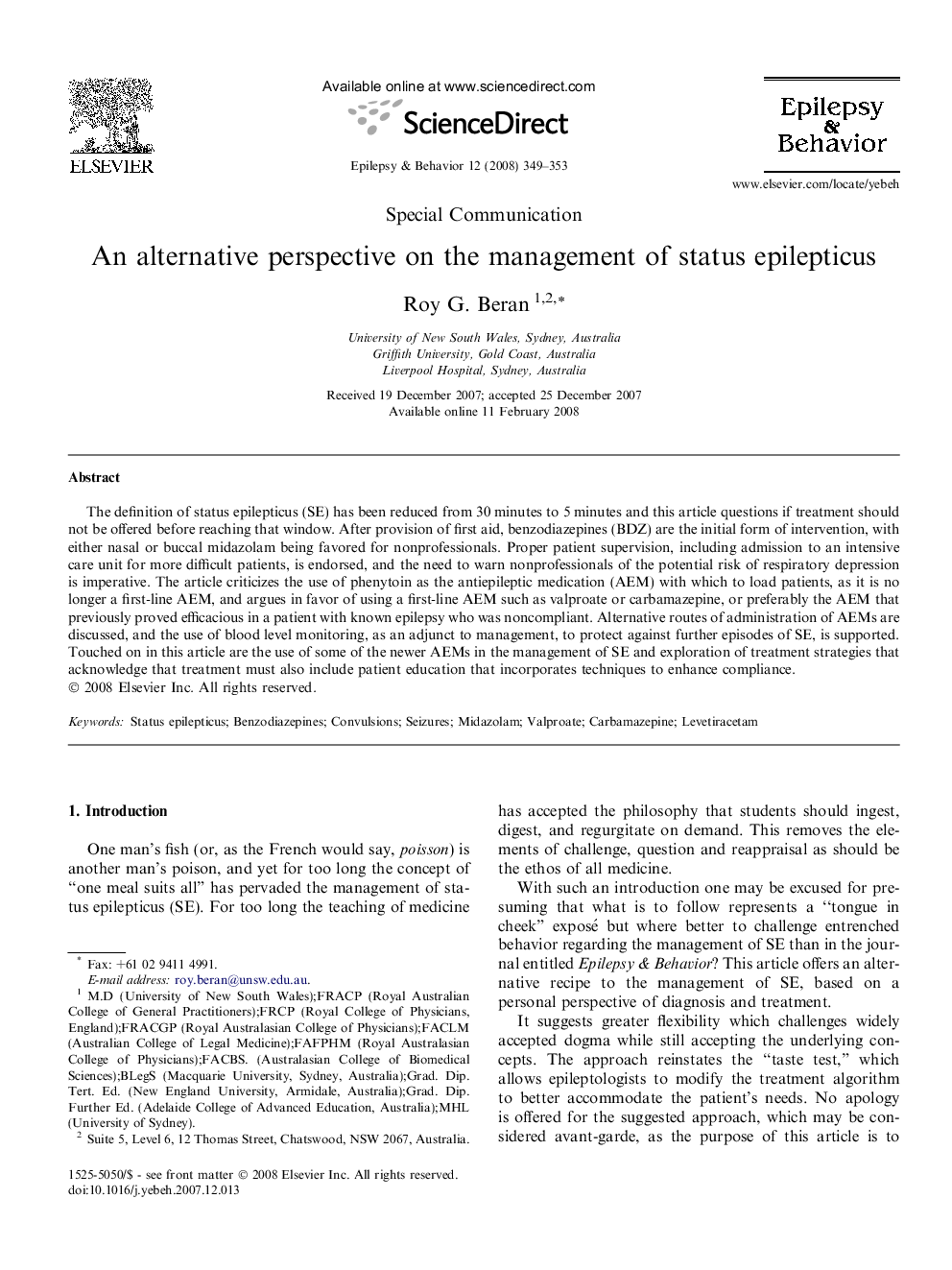| Article ID | Journal | Published Year | Pages | File Type |
|---|---|---|---|---|
| 3051306 | Epilepsy & Behavior | 2008 | 5 Pages |
The definition of status epilepticus (SE) has been reduced from 30 minutes to 5 minutes and this article questions if treatment should not be offered before reaching that window. After provision of first aid, benzodiazepines (BDZ) are the initial form of intervention, with either nasal or buccal midazolam being favored for nonprofessionals. Proper patient supervision, including admission to an intensive care unit for more difficult patients, is endorsed, and the need to warn nonprofessionals of the potential risk of respiratory depression is imperative. The article criticizes the use of phenytoin as the antiepileptic medication (AEM) with which to load patients, as it is no longer a first-line AEM, and argues in favor of using a first-line AEM such as valproate or carbamazepine, or preferably the AEM that previously proved efficacious in a patient with known epilepsy who was noncompliant. Alternative routes of administration of AEMs are discussed, and the use of blood level monitoring, as an adjunct to management, to protect against further episodes of SE, is supported. Touched on in this article are the use of some of the newer AEMs in the management of SE and exploration of treatment strategies that acknowledge that treatment must also include patient education that incorporates techniques to enhance compliance.
